Can You Use Alpaca Manure Straight To Raised Garden Beds
Raised garden bed ideas offer the solution for many common gardeners' woes, from sore knees to poor soil conditions. They can also make a stunning feature for an outdoor space, adding extra height and interest when filled with beautiful flowers, vegetables, and even shrubs.
If you suffer from joint or mobility problems, then raised garden beds can be built at just the right height for you to plant and prune in comfort. You could even make the frame wide enough to double as a seat, from which you can take in the sights and scents of your garden. In terms of soil, raised garden beds present the perfect opportunity to create your own weed-free base, tailored to the needs of the plants you really want to grow. They're ideal for keeping maintenance down and helping your flowers and crops to flourish.
There are lots of styles to choose from, too. From woven looks to rustic garden sleepers, we've rounded up some of our favorite raised garden bed ideas below to get you inspired. Plus there's plenty of practical tips and advice, too.
1. Pick the optimum position
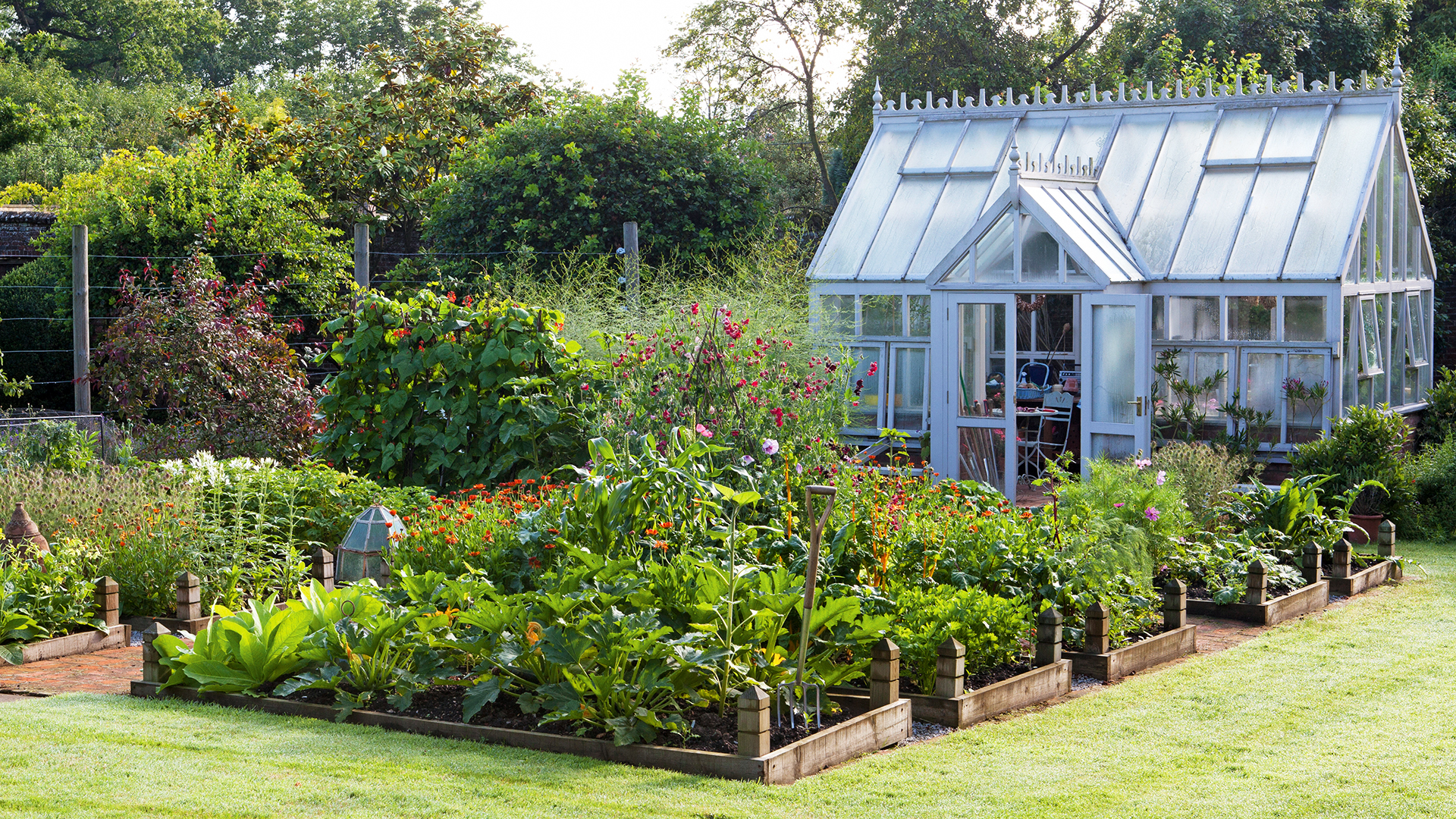
Position your raised garden bed ideas with a greenhouse nearby for easy access when you're tending to your plants
(Image credit: Leigh Clapp)
Raised garden beds are a great addition to any landscaping ideas. However, the best place to position them depends on what you want to grow. Each plant has its own requirements for light – from full sun to total shade. For most vegetables, you'll need sun for a large portion of the day, but some crops will tolerate a bit of shade – try leafy greens, broad beans, carrots and beetroot (find out how to grow beetroot in our guide).
Choose a site that is level or slightly raised, rather than at low level or in a dip that could become waterlogged. Conversely, avoid overly sheltered spots or right next to a wall, as the bed will get less rainwater.
If you're building more than one raised bed, make sure you leave enough room to kneel down between each one – half a meter should do it. And, if you've got the space, then positioning greenhouse ideas nearby is a practical choice. That way, you can quickly and easily access your seedlings and tools when busy tending to your beds.
2. Section it up
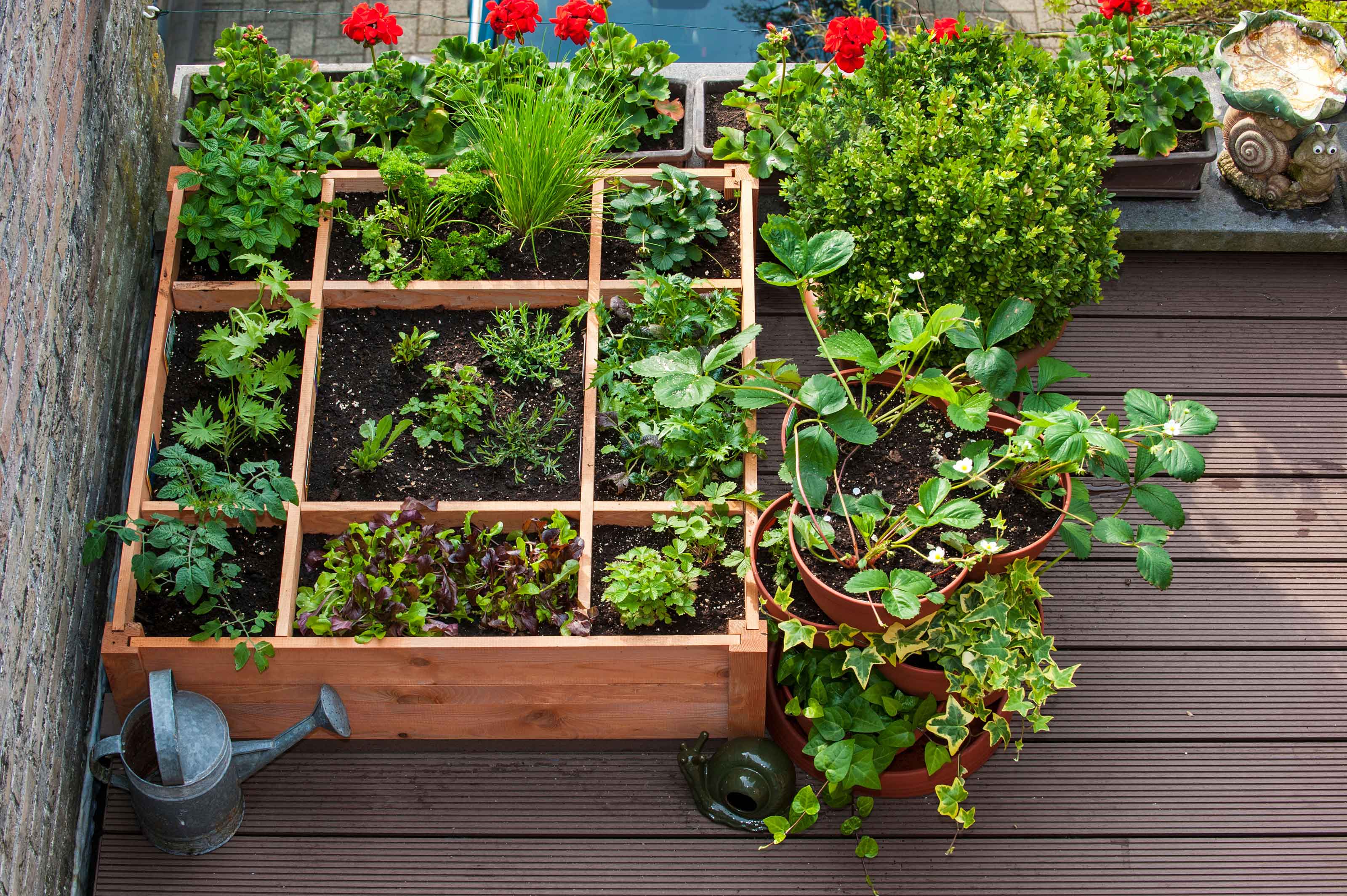
A sectioned planter is the perfect choice for smaller gardens
(Image credit: Arterra Picture Library/Alamy Stock Photo)
Want to introduce raised beds to your small garden ideas, or even your balcony ideas? A design like this is ideal if space is at a premium.
It's also great if you're just starting out with growing your own crops. As the planter is neatly split into sections, it's easy to experiment and find your favorite veg to grow, without having to commit to entire beds full of them. Try herbs, tomatoes, radishes, lettuces or alpine strawberries for an easy-care and super-tasty variety.
3. Make a statement with stone
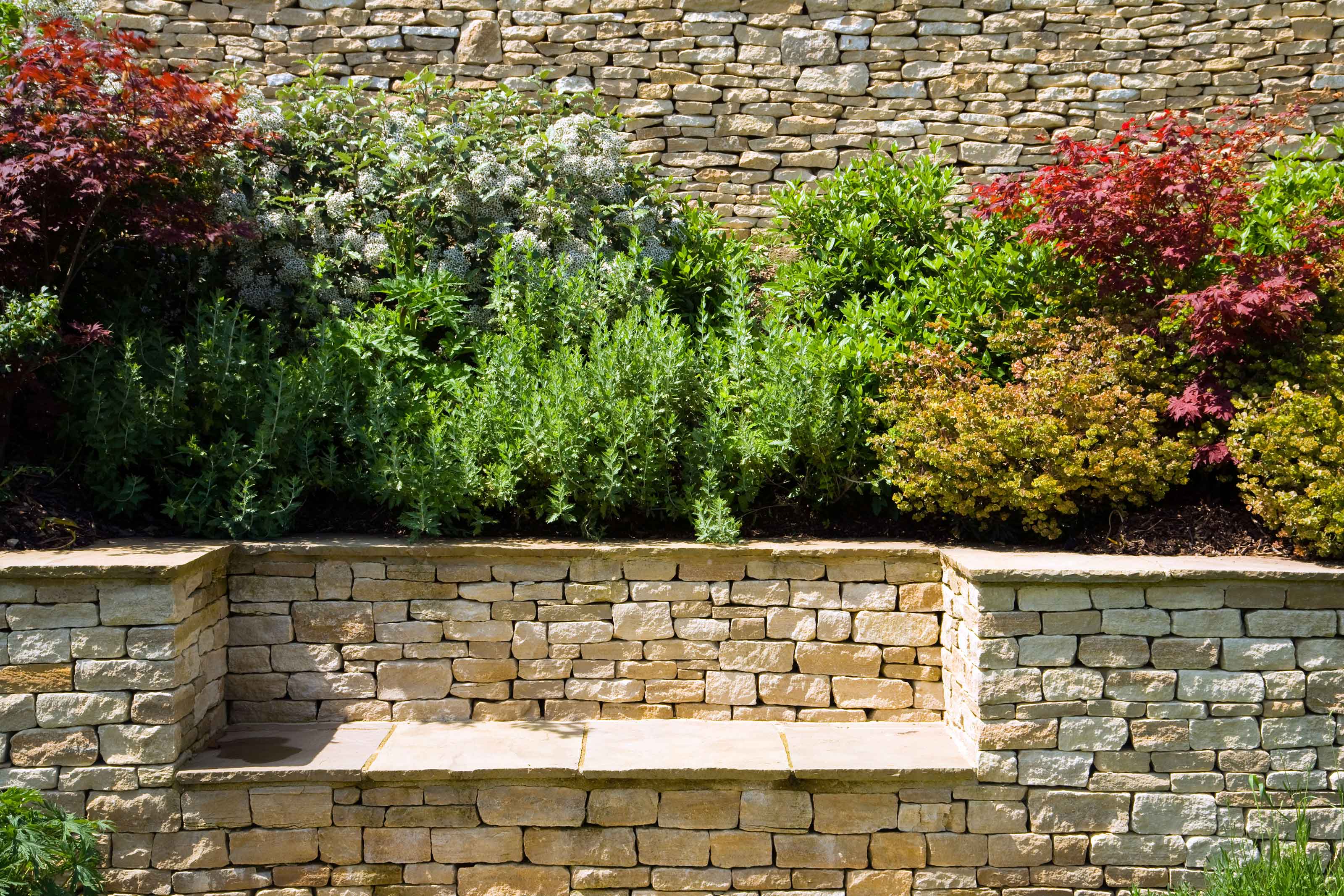
Integrate your raised garden bed ideas into your landscaping scheme
(Image credit: Chris Rose/PropertyStock/Alamy Stock Photo)
'Edible gardens and outdoor living spaces are set to be all the rage this coming year,' says the team at Bradstone. 'Split-level gardens are also emerging as homeowners look to fashion distinct zones for different uses, as well as create areas where home produce can be protected from the elements.'
The simple feature of raised beds can help you to embrace these key trends, they add. All you need to do is combine them with your garden wall ideas, and integrate a clever bench, as seen above.
A drystone style offers a timeless and laid-back look – perfect if you prefer an informal setting – but there are plenty of sleeker options for more contemporary plots. Filling the beds with the likes of aromatic rosemary or colorful, ornamental vegetables will make the seating spot even more of a joy to use.
4. Use sleepers for your raised garden bed ideas
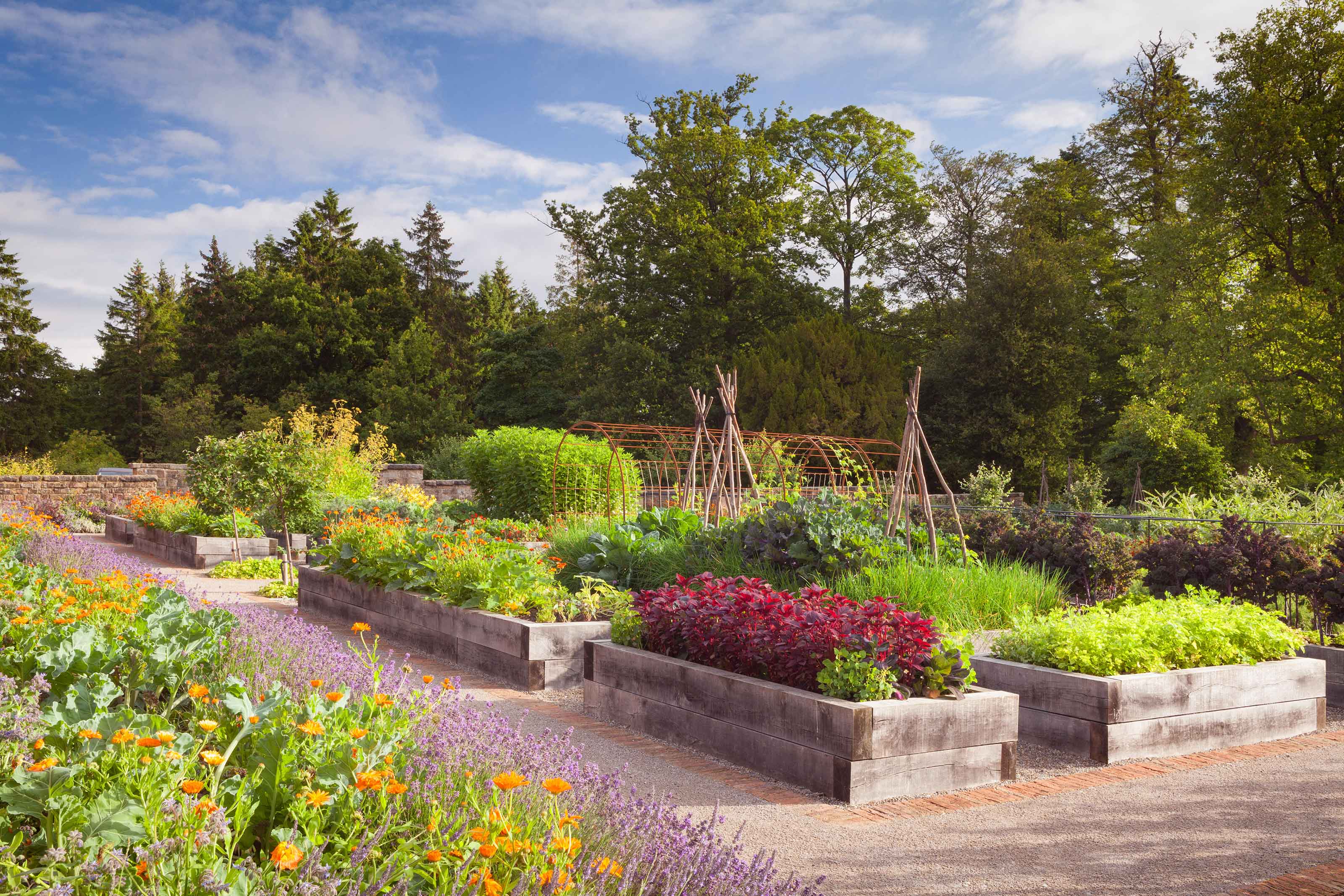
Garden sleepers make a smart and structural solution for raised garden bed ideas
(Image credit: LEE BEEL/Alamy Stock Photo)
Garden sleeper ideas are a stylish and versatile material for all kinds of outdoor features – it's no wonder they're so popular in people's backyards. But, due to their sturdy nature, one of their best uses has to be for raised garden bed ideas.
It's easy to build your own framework due to their smooth and straight shape – corner braces and timber screws will keep it secure. You can stack them on top of each other to add more height; we think a layer of two makes for a striking impression, as demonstrated in the set-up above.
However, if you choose to take this approach for growing your own crops, be wary of reclaimed boards, of which there are plenty available. True, they may add an attractively weathered look to your plot. But, many have been treated with an old-fashioned wood protector called Creosote, which is now said to be toxic to the environment and bad for our health. Opt for new garden sleepers instead.
5. Customize your soil to match your plants' needs

You can customize the soil mix of your raised garden beds to grow whatever you like
(Image credit: Leigh Clapp)
One of the main advantages of raised garden bed ideas is that you can create an optimum soil mix. This is particularly useful when you want to grow acid-loving plants, such as azaleas and camellias, but you have alkaline soil; or vice versa for alkaline-loving plants like thyme and lavender.
You can fill your beds with a mix of two thirds of multipurpose compost and a third garden soil or John Innes. You should also add organic matter.
For the most conscientious gardeners, the RHS advises that the ideal combination for raised beds is seven parts topsoil to three parts organic matter, such as well-rotted manure, and two parts sharp sand.
6. Add a splash of color
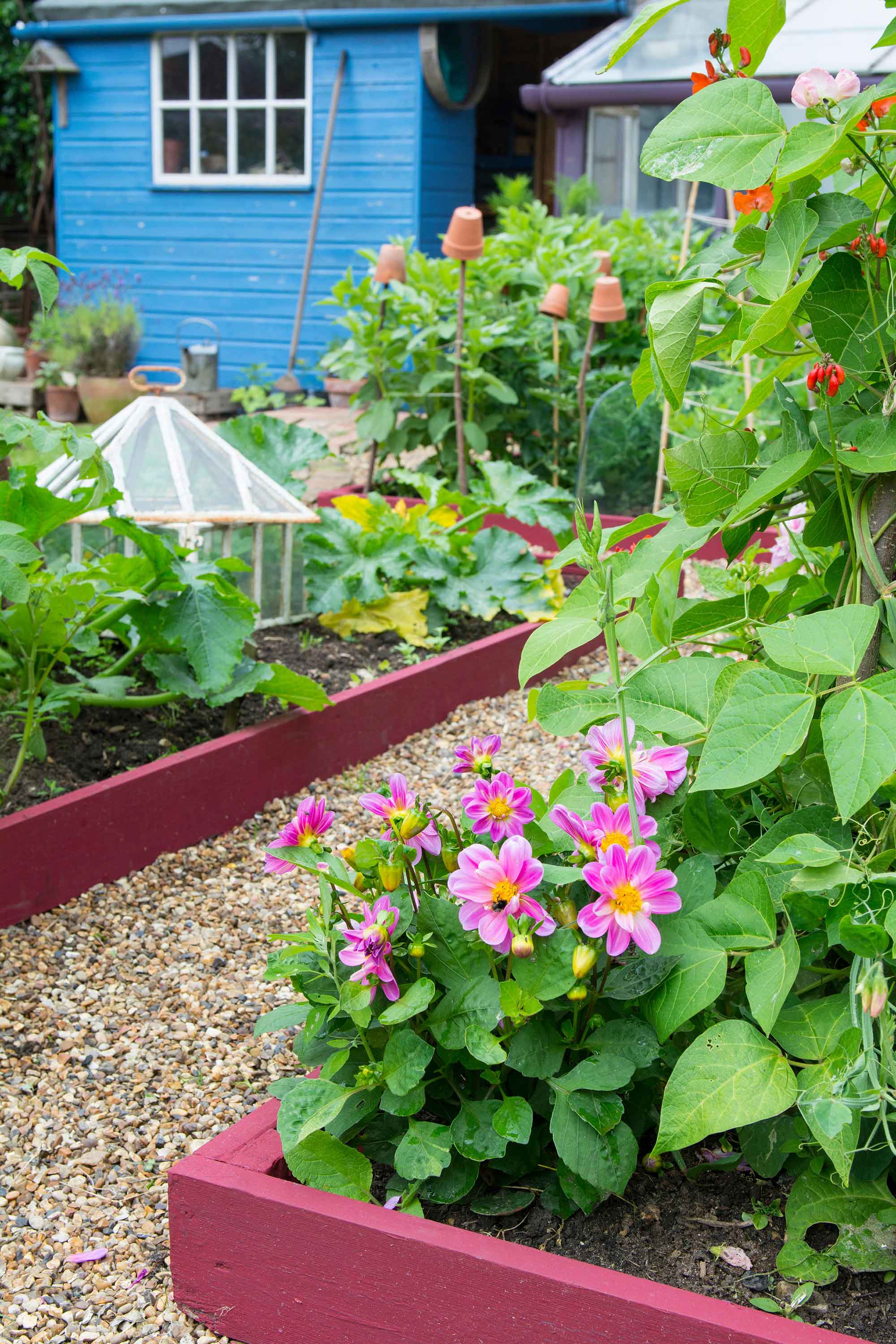
Why not add a playful twist to your raised garden bed ideas by painting them in a bold hue?
(Image credit: GKSFlorapics/Alamy Stock Photo)
You don't have to stick to traditional tones for your raised garden bed ideas. If they're made from timber, it's easy to give them an update with a fresh coat of the best exterior wood paint.
Pick a color to match the theme of your plot. You could go for chic grey shades or trendy charcoal for modern spaces; pretty pastel hues for cottage-garden designs; or something bright and bold – like this hot pink – for a more playful touch.
And whilst you're there, why not paint your shed, too? Our guide on how to paint a shed has step-by-step advice.
7. Introduce a scarecrow to deter pests
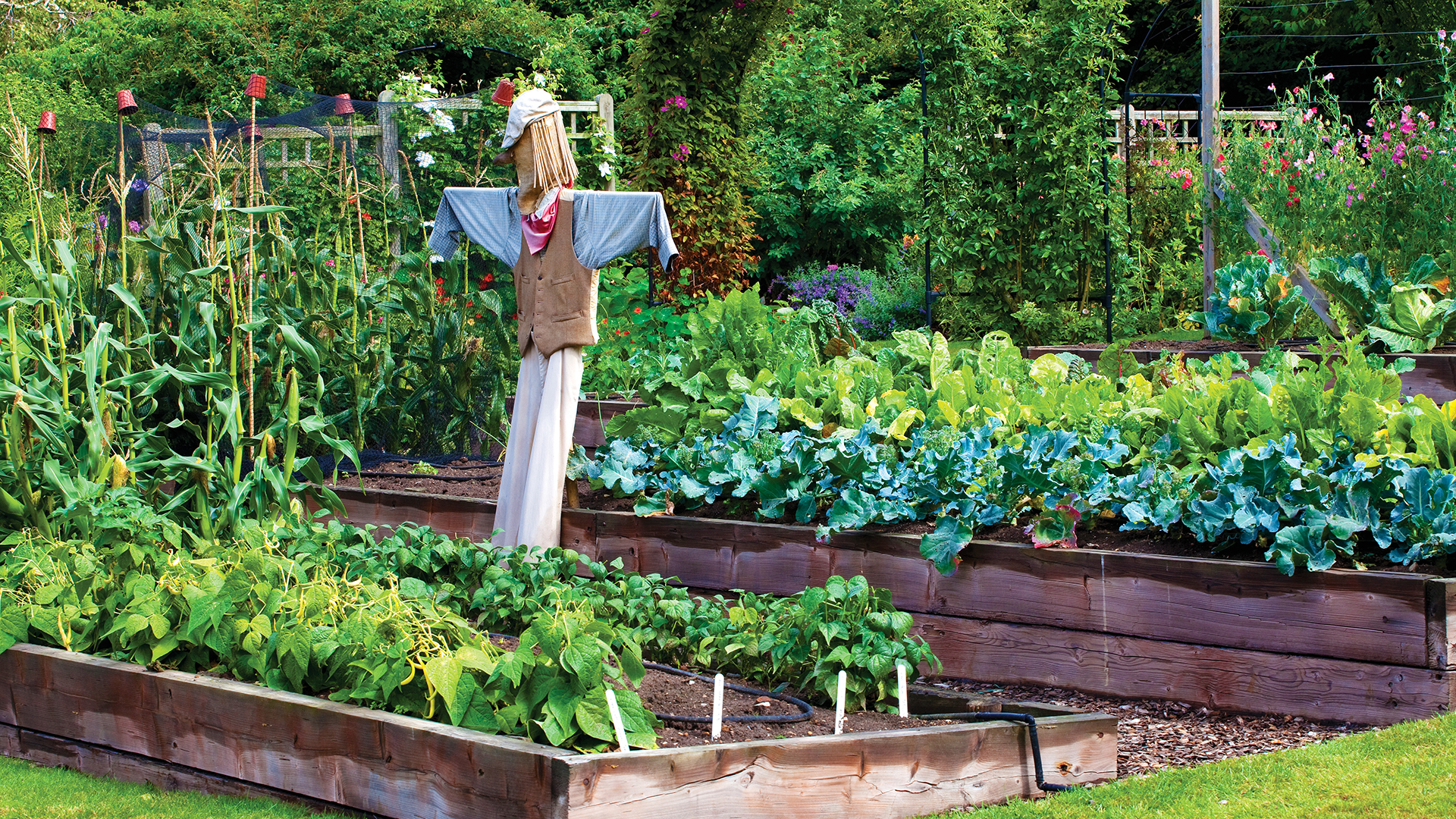
Scarecrows might scare off the birds, but to protect your crops from insects, investigate solutions such as netting
(Image credit: Leigh Clapp)
A major benefit of raised beds is that it's easier to protect crops from pests such as carrot fly, aphids and even birds. These creatures don't need much encouragement to feast on plants and ruin your hard work.
If birds are your problem, then a classic approach is a scarecrow. These are designed to deter blackbirds and crows from eating freshly sown seeds. They can make a charming addition to raised bed ideas, however to be actually effective, you'll need to move them every few days to keep up the element of surprise. Adding something flashy, such as reflective tape, can help too. If a scarecrow feels a little OTT for your plot, then hanging old CDs from string is another budget-friendly deterrent for birds. Decoy owls and motion detector sprinklers can also help if you need to know how to get rid of squirrels in the garden.
You can also use protective netting, such as Enviromesh, to deter pests. Simply add a post in each corner of your raised bed ideas and drape the netting over the top. Alternatively, you can opt for taller corner posts when you are initially building your raised beds.
Our guide on 5 garden pests to look out for has more advice on protecting your crops.
8. Opt for off-the-ground styles
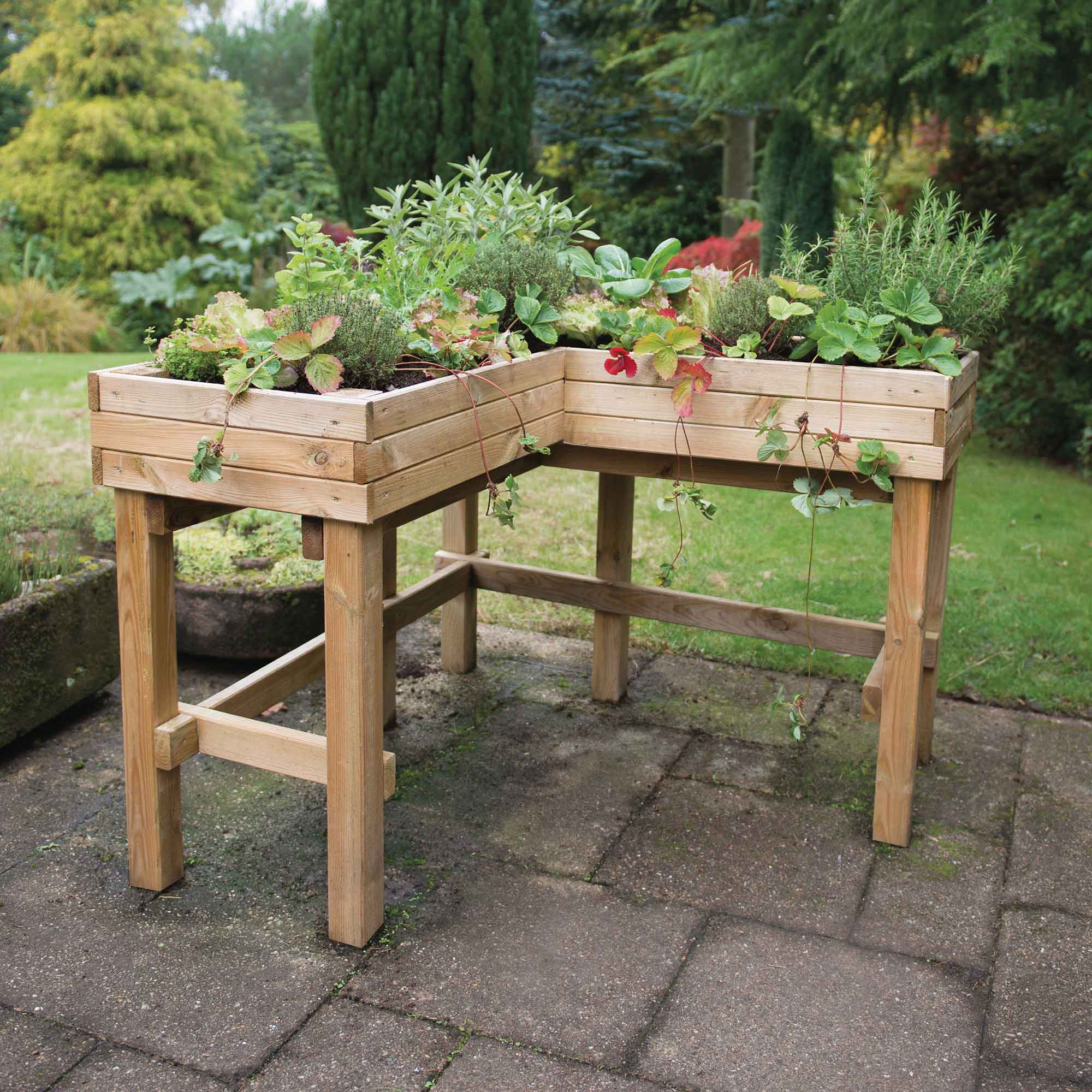
This raised planter from Cuckooland is a brilliant space-saving solution
(Image credit: Cuckooland)
If you love the practicality of raised garden bed ideas but don't fancy the work of installing them, then a raised planter like this is an ideal solution. It's also a good choice for smaller patio spaces or courtyards, where there's no existing patches of soil that can be easily dug.
There are all kinds available. But, we particularly like the angled design of this one which means it can neatly slot into the corner of your outdoor space. Plus, when growing veg and flowers in containers or pots like this, you can easily move them around if you fancy a freshen-up.
Our garden planter ideas feature has lots more inspiring designs.
9. Soften the look with woven sides
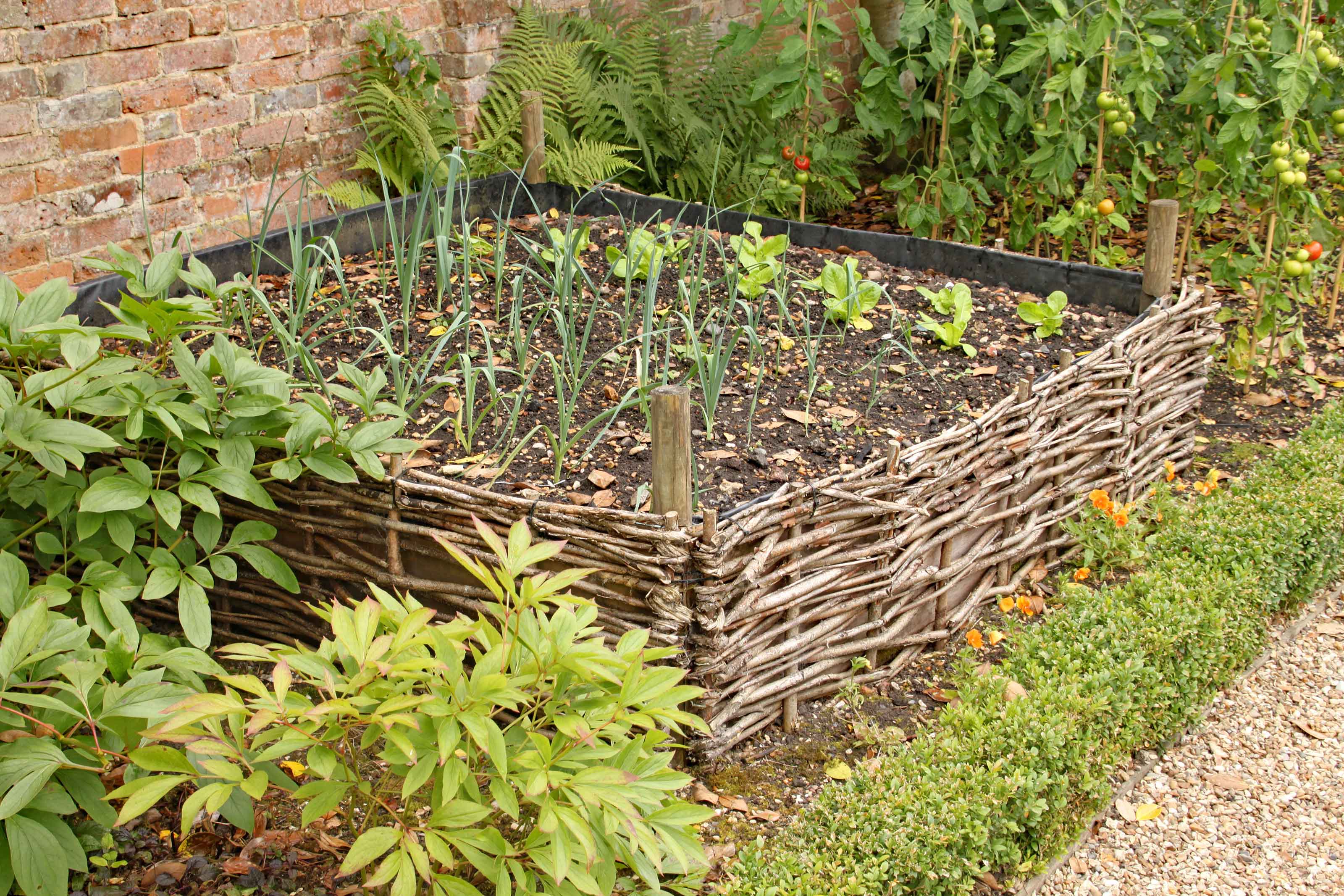
Woven edges for raised garden bed ideas adds a textural touch
(Image credit: Gartland/Alamy Stock Photo)
If you're after a more rustic look for your kitchen garden ideas, then this might be the design for you. Woven willow or hazel offers a lovely, naturalistic touch to any raised bed, which allows them to blend in harmoniously with surrounding foliage and shrubs. It's a fabulous choice for cottage garden ideas or modern plots alike.
The textural finish also adds a visually-interesting element to the scene. When bought commercially, the inner, soil-retaining layer is generally made from timber, so you don't need to worry about a lack of robustness.
10. Try concrete for a modern vibe
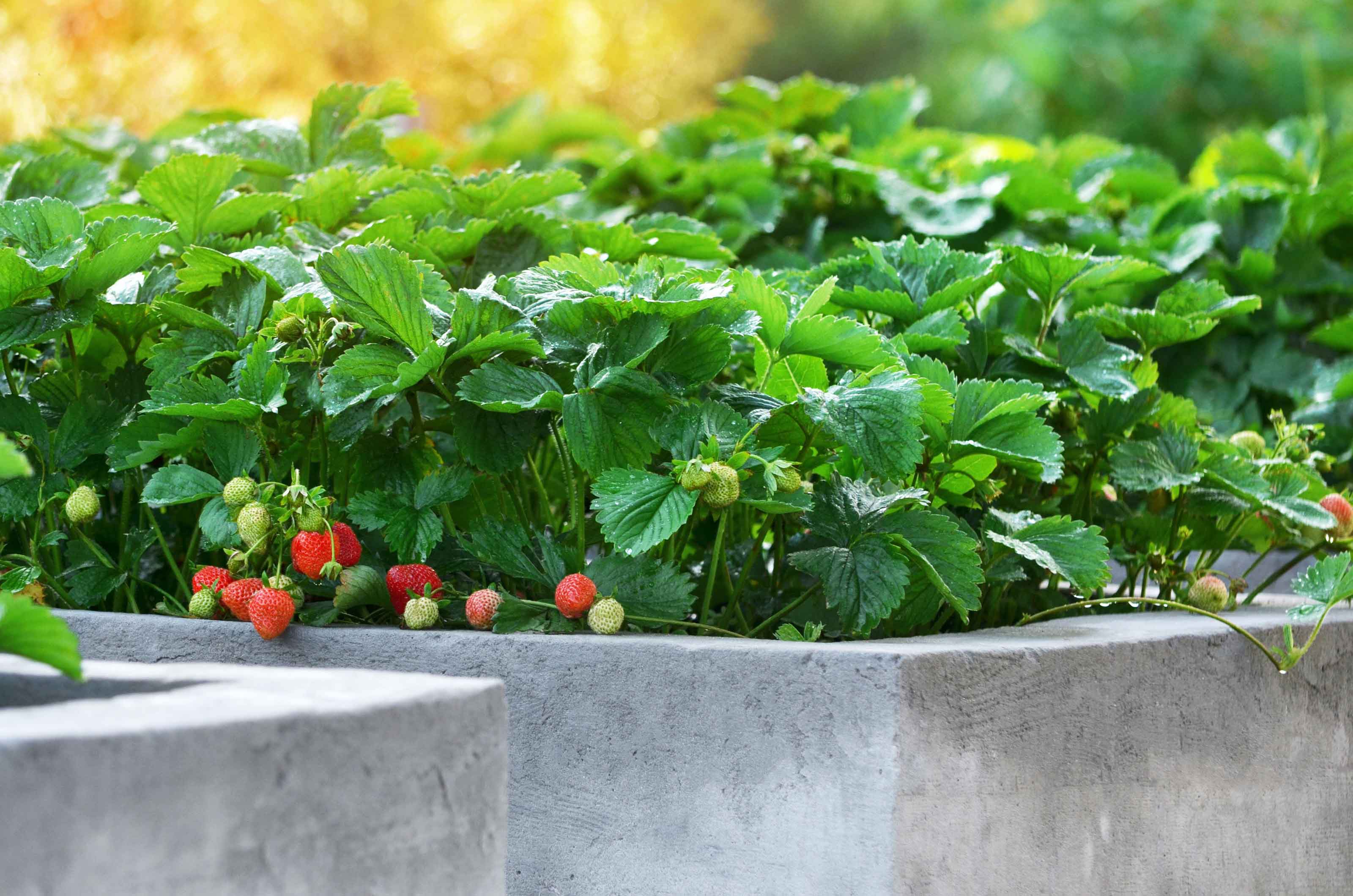
Concrete planters add industrial flair to a plot
(Image credit: Yuliia Bilousova/Alamy Stock Photo)
Now here's a design that's definitely for modern garden ideas – concrete planters. They offer a chic industrial edge to a space which is perfect if you love an understated look.
They can be incredibly heavy though, and are prone to cracking in frost. As an alternative (and to save on cash), you may wish to opt for concrete-effect raised garden bed ideas instead, which tend to be made from weather-proof resin. Look for recycled designs for extra eco-friendly points.
11. Add vertical interest with plant supports
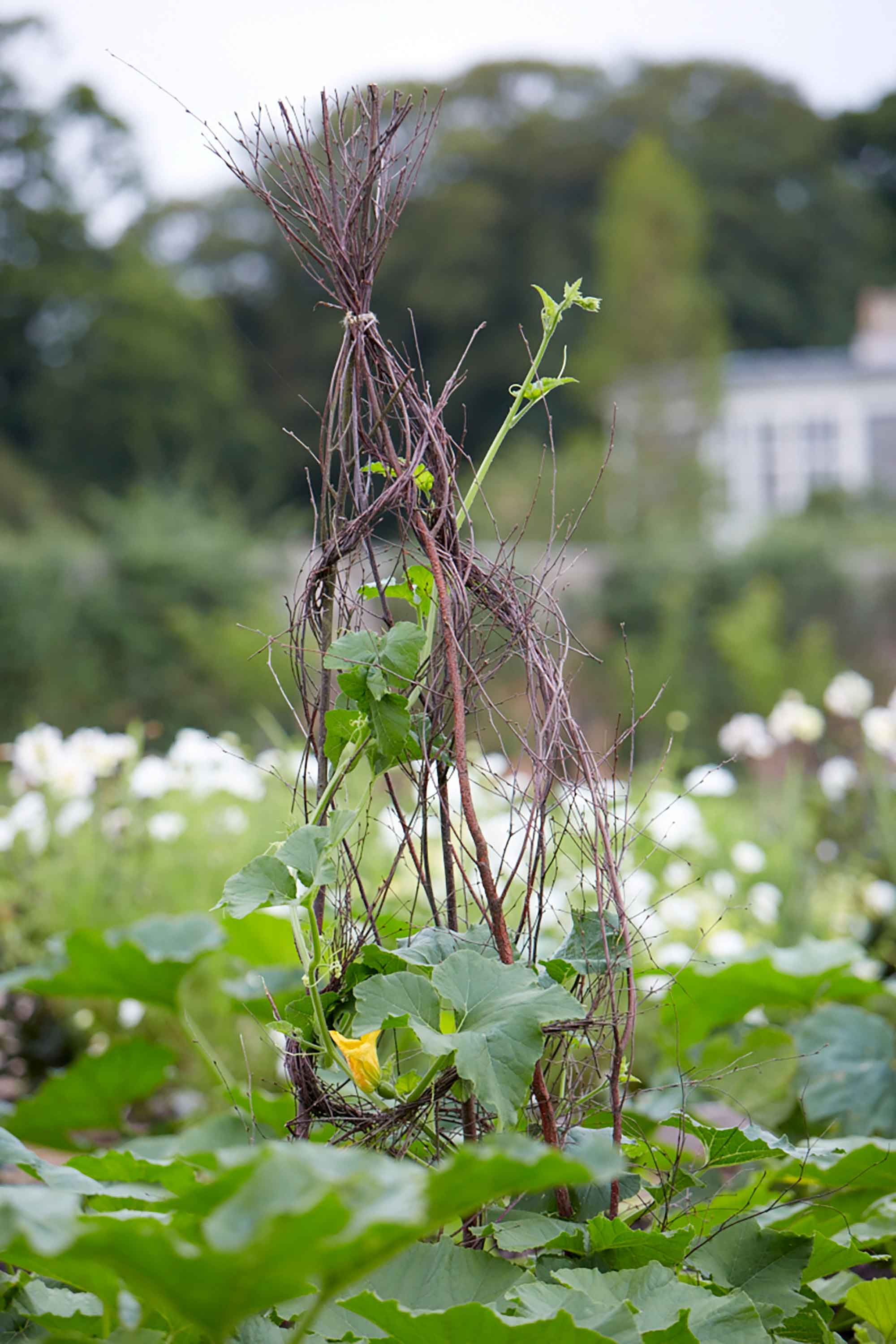
A woven obelisk brings a relaxed style to this raised bed
(Image credit: Britt Willoughby Dyer/Future)
Bringing the likes of obelisks and other climbing plant support ideas into your raised beds opens up all kinds of planting opportunities. Of course, it'll make it easy to grow the likes of sweet peas and climbing beans, but you can also use them to train squash, tomatoes, and – if you're using something sturdy like a trellis – even melons.
Not only will it maximize on space for your raised bed, but it will also provide vertical interest. A woven design like this is a lovely, laid-back choice, but there are plenty of smart and sleek options to choose from too.
Which type of raised garden bed is best?
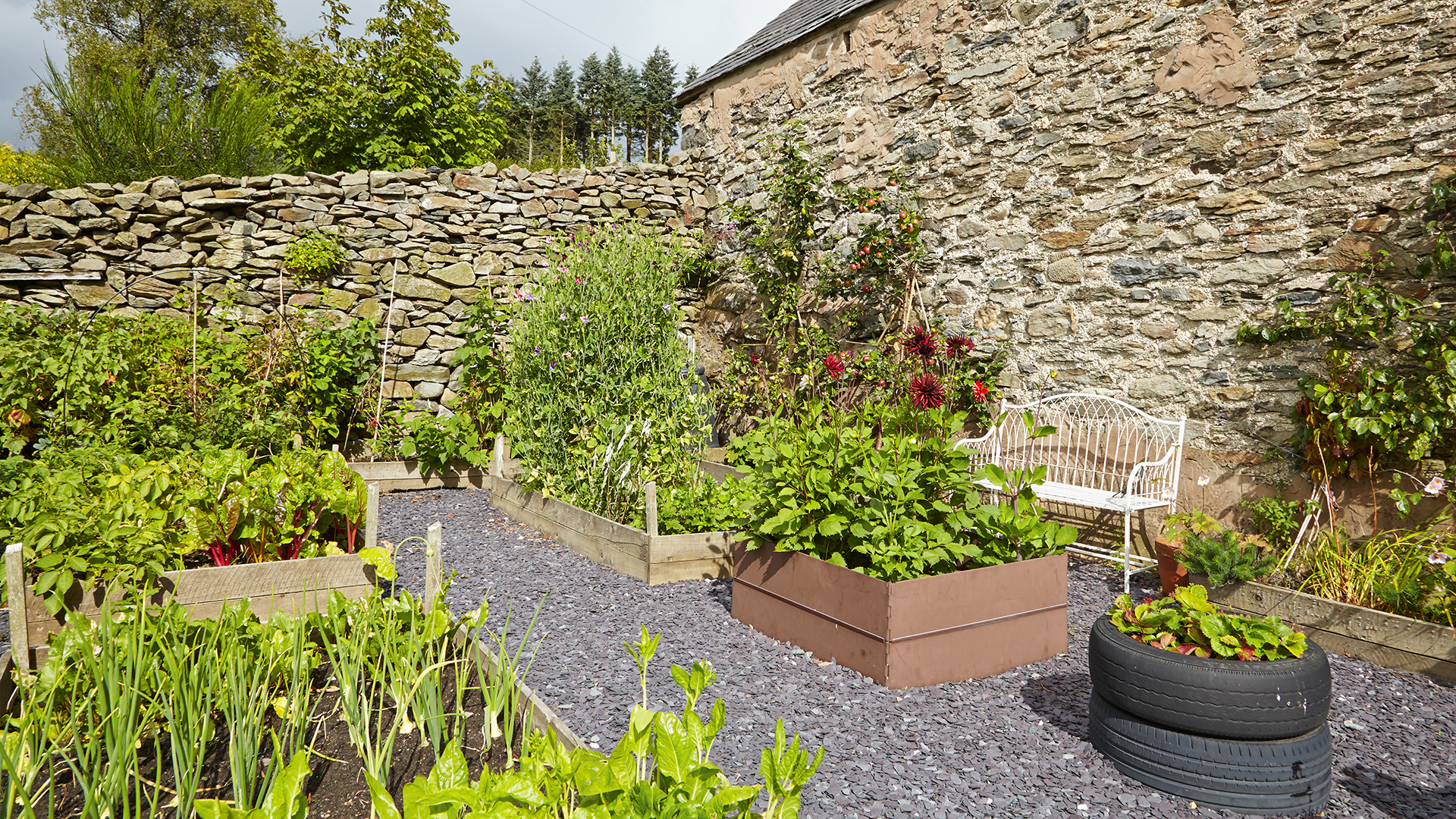
Your raised garden bed ideas can be made from a variety of materials including timber, metal, bricks and, as seen in this kitchen garden, old tires
(Image credit: Bridget Peirson)
Adding raised beds to the garden is a relatively easy task, and there are a number of options depending on your budget and skill level.
The simplest solution is to purchase a flat-pack kit, where the wood or metal is cut to exactly the right size with predrilled holes for assembling in position. You'll likely need some basic tools, such as a screwdriver and hammer, to build it.
Aside from ease, the advantage of buying a kit is that there is a good choice of designs available, so you can choose one that will best suit your garden. However, this is usually a more expensive option.
If you want a smaller, less permanent bed for growing a few herbs or lettuces, then invest in a raised planter or trug with legs. You can position one of these with your patio ideas, perhaps close to the kitchen so you can easily access your crops while cooking.
When it comes to building raised garden beds on a DIY basis, the main options are wood and masonry. Wooden raised beds can be as simple as a few scaffolding boards or similarly sized timber planks screwed or nailed to corner posts. But designs can be as elaborate as you desire.
Masonry beds require more skill to build, so unless you intend to hire a handyman you'll need to learn how to lay brick or stonework. However, this type of bed is a more permanent feature that can harmonize with the exterior of your house, and is ideal for incorporating seating.
You can find more information in our guide on how to build a raised bed.
How should I water and feed my raised garden beds?
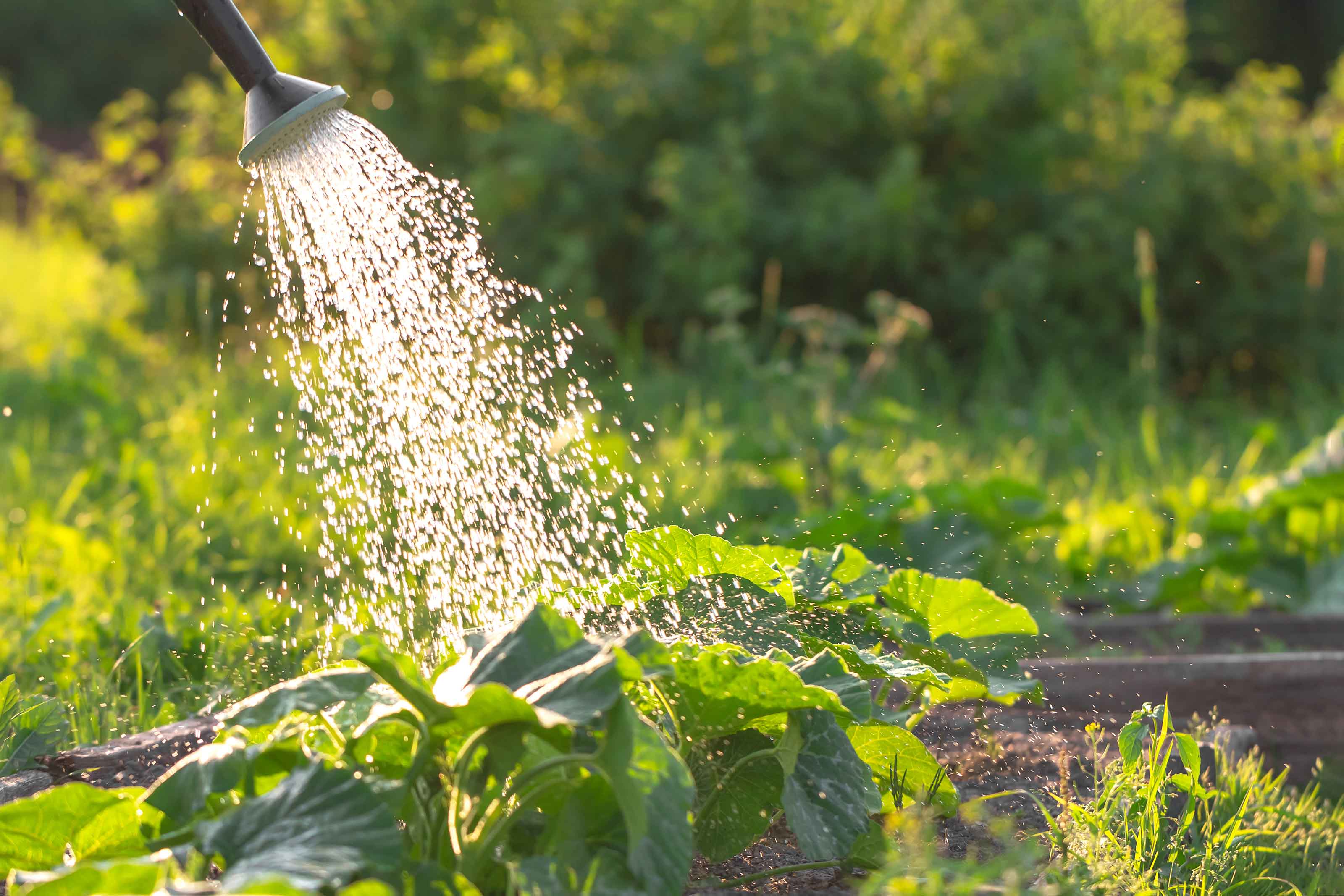
Don't forget to water and feed your raised garden bed ideas properly for the best results
(Image credit: rbkomar/Moment/Getty Images)
You'll need to keep on top of watering in warm weather. Water in raised garden beds should drain much more quickly than in the ground, which means the soil can dry out.
Mulching the soil will help to retain moisture and add nutrients, but if you have a lot of beds to water, make sure you can access them with the hosepipe. Or, for the ultimate convenience, fit in a best garden sprinkler or an irrigation system. Where possible, use harvested rainwater from a water butt – a great addition to sustainable gardens.
You can easily feed beds while you are watering them, using a water-soluble fertilizer. You usually need to do this fortnightly, though it's important to take note of each plant's preference.
Alternatively, for a more low-maintenance regime, use a slow-release fertilizer, which is sold as granules or pellets. Simply fork them into the soil early in the season and they will gradually release food during each watering.
It's also worth applying blood, fish and bone just before the onset of spring and then again in mid summer.
What should I plant in my raised garden beds?
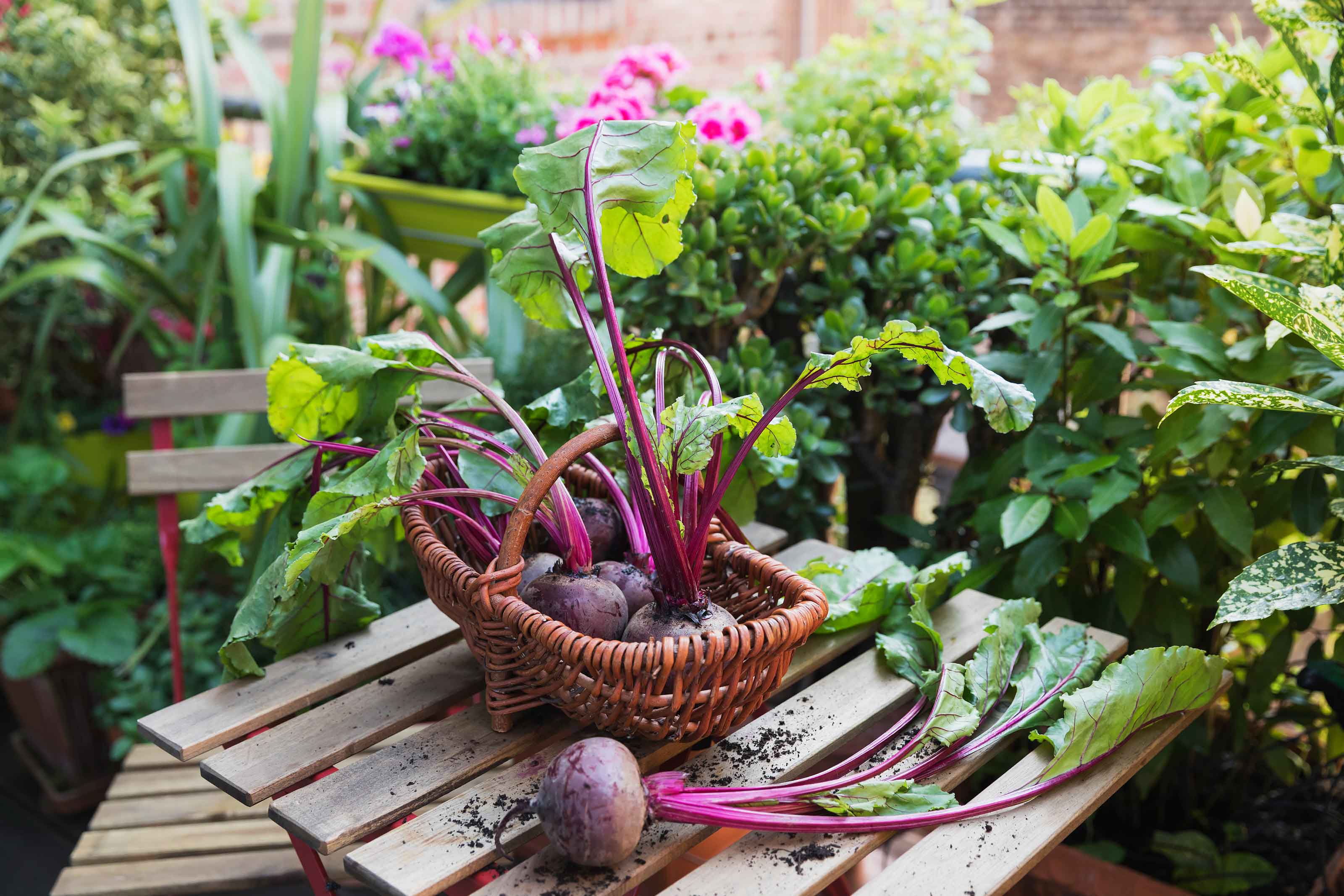
You can plant almost anything in raised beds to surround yourself with a green oasis of calm
(Image credit: Westend61/Getty Images)
All but the largest of plants can be grown in raised garden beds, but certain kinds will benefit more than others. Here's a few ideas:
- Salads and other leafy greens are more easily harvested from raised beds, especially cut-and-come-again varieties. These types of crops don't like to sit in waterlogged soil, so raised beds make it easier to provide drainage. You can even grow them throughout the colder months – check out our advice on growing lettuce in winter.
- Herbs are perfect for raised beds and are generally low-maintenance plants. Why not dedicate a whole bed to a herb garden to provide a feast for the senses as well as the dinner table? Our guide on how to create a herb garden will help you get started.
- Root vegetables such as carrots and parsnips do well in raised beds as they ideally need rock-free soil. You can also more easily net your crops to protect them from pests such as carrot fly.
- Flowers for cutting, such as sweet peas and dahlias, can be nicely zoned in their own beds, and you can ensure they have the optimum soil conditions for maximum blooms.
- Berry fruits, such as strawberries and raspberries, can be easily picked from raised beds, and protected from birds. Also, raspberries, blueberries and cranberries like acidic soil, so if yours is naturally alkaline you can fill a bed with lots of ericaceous compost. Our guide on how to grow strawberries is full of useful tips.
- Onions and other crops with long growing seasons benefit from being in raised beds. The reason for this is that the soil warms more quickly than in the ground, so you can start growing two or three weeks earlier in the season.
- Evergreen shrubs create year-round interest and structure when planted in raised beds, and can make striking architectural features.
There's plenty more advice in our guide to the best vegetables to grow in raised beds.
Can You Use Alpaca Manure Straight To Raised Garden Beds
Source: https://www.gardeningetc.com/au/design/raised-garden-bed-ideas
Posted by: romannottly.blogspot.com

0 Response to "Can You Use Alpaca Manure Straight To Raised Garden Beds"
Post a Comment